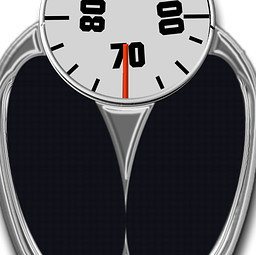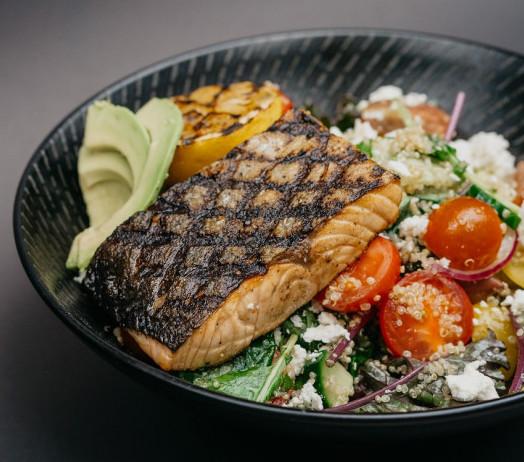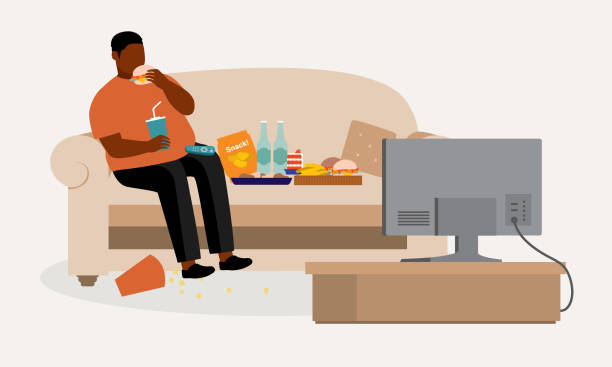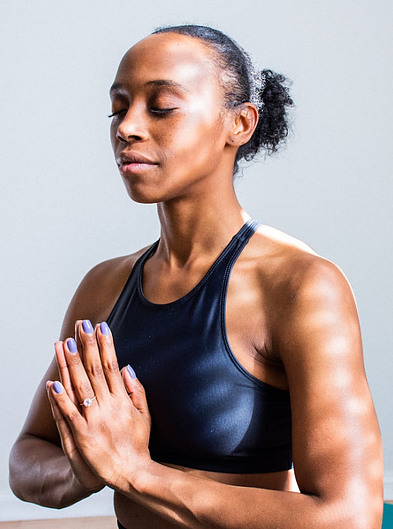
Senior Fitness Exercises for Overweight Seniors
—A Gentle Start — As we age, it’s essential to prioritize our health and well-being, and this includes maintaining physical fitness. However, starting senior fitness exercises for overweight seniors can be a daunting task. The good news is that there are plenty of exercises tailored to meet the unique needs of seniors, regardless of their weight or fitness level. In this blog, we’ll explore some senior fitness exercises along with some nutrition information to help overweight seniors embark on their fitness journey safely and effectively.
Before You Begin:
Before starting any exercise routine, it’s crucial to consult with your healthcare provider, especially if you have any preexisting medical conditions. They can offer personalized advice on exercise and nutrition and ensure that the exercises you choose are suitable for your specific situation.
Important point 1 of 2
The importance of maintaining a balanced and healthy diet because nutrition plays a more significant role in achieving fitness goals, whether that involves weight loss, muscle gain, or overall well-being.
I use the following equation for my fitness efforts and goals:
- 1. Nutrition (80%): Multiply your overall efforts by 0.8 (80%). For example, if your total fitness effort is represented as “X,” the nutrition component would be 0.8X.
- 2. Physical Training (20%): Multiply your overall efforts by 0.2 (20%). Again, using “X” as the total effort, the physical training component would be 0.2X.
So, the formula can be expressed as:
Fitness = 0.8X (Nutrition) + 0.2X (Physical Training)
Creating a nutrition plan for an overweight senior who is engaging in exercises requires a balanced approach. The goal is to provide essential nutrients while supporting weight loss or maintenance. Here’s a sample nutrition plan That I use when I want to cut my weight or could be for an overweight senior.
.
Important point 2 of 2
The psychological aspect of overeating due to BED (Binge Eating Disorder) or using food as a coping mechanism to deal with negative emotions or stressful situations, must be addressed first by a professional. It is important to determine if this problem is yours, it must be solved before you can truly lose weight. But never fear, the professional guidance you receive and your commitment to change makes it possible for you to succeed.
determine if this problem is yours, it must be solved before you can truly lose weight. But never fear, the professional guidance you receive and your commitment to change makes it possible for you to succeed.
Example menu that I have used
(Personal note- I no longer eat for pleasure. While I love many types of food, I am mindful of the fact that dwelling on the taste and my love for it may cause me to overeat. So now I eat when my body calls for it, for nutrition and sustenance. I enjoy the food, but only within the confines of portion control and my nutrition plan.)
I do intermittent fasting with good results. For me, I do not eat until 2pm and stop at 10pm. All the meals below are consumed within that period and only when I am hungry. It may or may not be for you, but the key is committing to a balanced nutrition plan that works for you. So, I have laid out the plan in the traditional timeline.
First Meal:
- Oatmeal: Start the day with a bowl of oatmeal. Oats are a great source of fiber and complex carbohydrates. Top with a handful of berries for added antioxidants and a dash of cinnamon for flavor.
- Greek Yogurt:
A serving of Greek yogurt provides protein and probiotics for digestive health. Choose the plain, non-fat variety and sweeten with a drizzle of honey or fresh fruit. - Green Tea:
Enjoy a cup of green tea for its metabolism-boosting properties and antioxidants.
Mid-Morning Snack:
- Mixed Nuts:
A small handful of mixed nuts (almonds, walnuts, or cashews) provides healthy fats and protein to keep you satisfied.
Lunch:
- Grilled Chicken Salad:
Make a colorful salad with grilled chicken, a variety of fresh vegetables (e.g., spinach, tomatoes, cucumbers, bell peppers), and a light vinaigrette dressing. - Quinoa: Serve your salad with a side of quinoa, which is rich in protein and fiber.
- Water: Stay hydrated throughout the day by drinking water or herbal tea.
Afternoon Snack:
- Carrot Sticks with Hummus:
Carrots provide vitamins and fiber, while hummus offers protein and healthy fats.
Dinner:
- Baked Salmon:
Salmon is an excellent source of omega-3 fatty acids, which are beneficial for heart health. Bake it with lemon and herbs for flavor. - Steamed Vegetables:
Serve with a variety of steamed vegetables like broccoli, cauliflower, and green beans for a nutrient boost.
nutrient boost. - Quinoa or Brown Rice:
Include a small portion of quinoa or brown rice for complex carbohydrates.
Evening Snack (Optional):
- Low-fat Cottage Cheese:
If you need a snack, opt for a small serving of low-fat cottage cheese for its protein content.
General Nutrition Guidelines:
- Portion Control:
I am mindful of portion sizes to avoid overeating. Use smaller plates and utensils to help with portion control. Combined with my philosophy of eating only when I am hungry, this helps me with this aspect of my goal. - Hydration:
I drink plenty of water throughout the day. Sometimes thirst can be mistaken for hunger. - Balanced Meals:
I strive for balanced meals that include lean protein, whole grains, and plenty of fruits and vegetables. - Limit Processed Foods:
I minimize processed foods, sugary snacks, and high-sugar beverages. Fast food is a no-no. These can lead to weight gain and are often low in nutrients. - Fiber: I incorporate fiber-rich foods like whole grains, fruits, and vegetables to support digestion and control appetite.
- Lean Proteins:
I include lean protein sources like poultry, fish, legumes, and tofu for muscle maintenance and repair. - Healthy Fats:
I include sources of healthy fats such as nuts, avocados, and olive oil while watching portion sizes. Sometimes, a quick snack will remedy any hunger that occurs. - Consistency:
Maintain a regular eating schedule to help regulate your metabolism and energy levels.
Remember that individual dietary needs can vary, so it’s advisable to consult with a healthcare provider or a registered dietitian to create a personalized nutrition plan that considers any specific health conditions and dietary preferences. Additionally, adjusting caloric intake according to the individual’s exercise level and weight loss or maintenance goals is essential.
Exercises to start
As in previous blogs, I have mentioned some of these exercises for seniors starting out with their fitness journey. These are specific for individuals who seek to lose weight. The goal is to begin the plan with nutrition and these basic exercises. You should then gradually increase levels and add more exercises as you stay consistent and begin to progress as the weight drops.
- Walking
Walking is an excellent low-impact exercise that most seniors can enjoy. It’s a simple and effective way to increase your physical activity. You can start with short walks and gradually extend your walking time as your stamina improves. Walking not only helps improve cardiovascular health but also strengthens leg muscles.
- Chair Exercises
Chair exercises are ideal for overweight seniors who may have difficulty standing for extended periods. These exercises can be performed while seated in a sturdy chair. Examples include seated leg lifts, seated marches, and seated side leg lifts. They help improve muscle strength and circulation.
- Water Aerobics
Water aerobics is a gentle and effective way to get moving, particularly for seniors with joint pain or arthritis. The buoyancy of the water reduces the impact on your joints while providing resistance to help build strength. Many local fitness centers offer water aerobics classes.
the water reduces the impact on your joints while providing resistance to help build strength. Many local fitness centers offer water aerobics classes.
- Tai Chi
Tai Chi is a low-impact exercise that focuses on slow, flowing movements. It improves balance, flexibility, and overall body awareness. Practicing Tai Chi can also have a calming effect, reducing stress and anxiety.
- Yoga
Yoga is a great way to improve flexibility and balance. There are various yoga classes designed specifically for seniors. Poses can be adapted to accommodate different fitness levels and physical limitations.
- Seated Resistance Band Exercises
Resistance bands are affordable and versatile tools for building strength. You can perform seated resistance band exercises to target different muscle groups. They’re easy to use and can be tailored to your fitness level.
- Wall Push-Ups
Wall push-ups are a modified version of traditional push-ups and can be an excellent upper body workout. Stand at arm’s length from a wall, place your hands against it at shoulder height, and push your body away from the wall. This exercise helps strengthen the chest, shoulders, and arms.
- Balancing Exercises
Balance exercises are crucial for seniors to prevent falls. Simple exercises like standing on one foot or heel-to-toe walking can help improve balance and stability. Just ensure you have something to hold onto for support if needed.
Conclusion
Embarking on a fitness journey as an overweight senior may seem challenging, but the key is to start slowly and progressively increase the intensity and duration of your exercises. These senior fitness exercises are designed to improve your physical health and overall well-being without putting too much strain on your body. Remember, the most important thing is consistency. Regular physical activity will lead to improved strength, flexibility, and overall health, helping you enjoy a more active and fulfilling senior life. So, lace up those sneakers, grab a chair or a resistance band, and start your fitness journey today!


